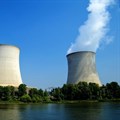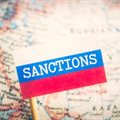
Subscribe & Follow
Potential impact of Russia-Ukraine conflict on SA's commercial property market

Firstly, the conflict appears likely to add to already troublesome global inflationary pressures, notably energy prices. Potential energy supply disruptions in the region, in part as a result of the conflict but also due to potential sanctions and boycotts against Russia - a key oil and gas producer, have sent energy prices rising significantly. On Friday, 4 March, Brent crude spot price was near $115/barrel, 17% higher than at 23 February, the day before the invasion began. This adds to already-mounting energy price inflation pressures, the recent Brent Crude price levels being approximately 124% above the end of 2020 level, and in South Africa, petrol prices have already been skyrocketing. The effect of the Russian invasion of Ukraine looks likely to add to this fuel price inflation. Coupled to this, the escalation of sanctions and boycotts against Russia and some allies, and potential retaliation, can further exacerbate broader supply chain disruptions globally, which can be inflationary.
Domestic agricultural economist Wandile Sihlobo also sees potential food price inflation, with Ukraine being a key agriculture producer, and he points to maize, wheat, soybean and sunflower oil prices being significantly up from a year ago.
While the inflation in certain commodity prices in the area of agriculture and mining, notably gold as a safe haven investment, can be somewhat beneficial for certain domestic agriculture producers and mining companies, a Ukraine inflationary effect on local food and petrol prices, as well as a possibly more widespread inflation impact from general global inflationary pressures, is likely a negative, not only eating into consumer incomes to a greater degree, but also because of greater upside risk to interest rates, given the SARB’s inflation target.
The war impact, especially via upward pressure on global energy prices, can also be a global economy negative, and thus a domestic economy downside risk, and has been raised as such by FNB’s economics team. The potential downside risk comes via SA’s trade, and the mining and manufacturing sectors are key in this regard.
Property economic impact
So, upside inflation, and thus upside interest rate risk, and downside economic growth risk, are the basic macroeconomic risks that appear to emanate from the war, the magnitude of which is highly unpredictable. What then are the potential impact points for the domestic commercial property sector should such an economic impact play out?
Capitalisation (Cap) rates
Given the partial link between short term interest rate and long bond yields on the one hand, and property capitalisation (Cap) rates on the other, some negativity around inflation prospects as a result of the Ukraine conflict led to some sell-off of South African Government bonds, with the average yield for 10-year bonds having risen from 9.26% as at 25 February to 9.665% as at Friday, 4 March.
While this is not a major sell-off in bonds to date, it does suggest that the Ukraine crisis’ fuelling of heightened inflation and interest rate fears would likely exert upward pressure on local property capitalisation rates, and thus be a negative for property valuations.
Vacancy rates
After recent years of rising average vacancy rates in all three major commercial property markets (industrial, retail and office), our recent FNB Property Broker Surveys late in 2021 were pointing towards a possible stabilisation in retail and office vacancy rates and a decline in industrial property vacancy rates, supported by some recovery in the economy following the sharp 2020 GDP contraction.
South Africa’s economic situation is fragile at best, however, so any major global recessionary impact on the domestic economy could quite easily see vacancy rates rising once more. While industrial property may weather an economic storm of moderate proportions, the fragile retail and office sectors, challenged by increasing online retail and greater remote working respectively, could quite easily see renewed weakness that could return them to rising vacancy rates and further downward pressure on rentals.
All three sectors could see economic pressures greater than would otherwise be the case as a result of the Ukraine crisis’ potential global economic impact. Industrial property’s link to the global economy is quite strong via warehousing and logistics space used for imports and exports, as well as the local manufacturing sector’s strong trade links to the rest of the world.
The retail sector’s links to the global economy are more indirect, rand weakness and higher global inflation partially bringing imported inflation into consumer goods prices, notably in the area of food prices given their global pricing link, and especially petrol prices.
Apart from higher inflation eating into consumer incomes that are already under pressure from a weak economy, rising interest rates lift the cost of servicing debt, further eating into incomes. The war could potentially add to these pressures that have already been mounting.
The office market is arguably the least directly exposed to the potential global economic impact from the Ukraine war, although it does house certain tenants who trade with the world. But its potential impact is more indirect, via the slowing economy impacting on the number of office worker jobs, in turn exerting pressure on office space demand. Higher interest rates, too, would exert additional pressure on both the landlord and tenant population.
Property valuations
With risks of additional upward pressure on capitalisation rates via long and short interest rates, and on vacancy rates via the economic impact translating into downward pressure on rentals, the Ukraine conflict looks to be a source of negative pressure on property valuations. However, it is too early and uncertain to tell if the magnitude of the potential economic and interest rate impact will be sufficient to delay our expected return in the All Property Average Capital Value (MSCI data) to positive nominal growth this year. The negative impact of the Ukraine war will be pushing against the lagged positive impact of a normalisation in economic activity, and some economic recovery, following the deep 2020 lockdown recession.
Can the impact extend as far as property operating costs?
The indirect impact of the war, via the economic impact on South Africa, can conceivably indirectly impact on operating costs via the inflationary impact feeding through to service provider costs. In addition, should electricity sales revenues be dampened by economic weakness, Eskom can attempt to claw it back through tariff increases, as can councils with rates and other tariff increases should economic pressure cause rate payer payment performance to weaken.
Potential residential rental market impact
The potential war impact on the domestic residential rental market is tough to call, depending on how big the magnitude is. Mild additional upward pressure on interest rates, over and above what would have been the case in the absence of war, could see additional impetus provided to the expected rental market recovery. We have expected that the rental market will strengthen as interest rates rise, with the economy and tenant payment performance both recovering after the hard lockdowns, and a greater group of would-be home buyers postponing their home buying to remain in the rental market for longer while rates rise.
But for this to continue, the negative economic impact of rising interest rates, and any additional Ukraine impact, must be mild at worst. Too big an inflationary and interest rate impact exerts financial pressure on tenants, and then all bets of recovery in this market are off. Therefore, it’s a fine balance.
Conclusion
In short, the Ukraine war impact remains highly uncertain, with much depending on how long it continues, its final outcome result, and what happens in terms of global sanctions, boycotts and reaction to them.
But the seemingly likely impact is an inflationary impact of some magnitude, which in turn heightens upside risk to both short and long-term interest rates, along with potential downward pressure on global economic growth.
For property, the main potential impact points are via upward pressure on cap rates, upward pressure on vacancy rates, downward pressure on rentals and thus property incomes, as well as possible additional upward pressure on operating costs.
For the residential rental market, the recovery can continue should the war impact be mild at worst, but this market’s tenant population cannot handle too big an economic impact before tenant rental payment performance starts to suffer again.



















